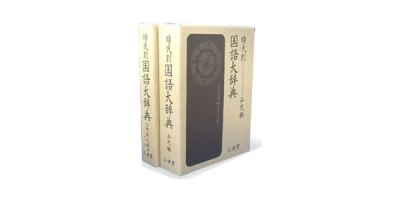
Up to now I’ve spoken about verbal characters from the perspectives of “class,” “status,” “gender,” and “age” (parts 57–72). One question I feel my readers may have is: are just four perspectives enough? After all, I said before, “character resides in everything” (part 42), so I could talk about character from the perspectives of blood type, such as “type B” or astrological signs like “Scorpio.” Thus I wonder if some of you don’t feel that four is completely insufficient.
This problem seems plausible, but in fact it makes the mistake of viewing “characters” and “verbal characters” as one and the same. “Verbal character” is a variety of “character;” the two are not the same. To be sure, when discussing character, a variety of perspectives are indeed necessary. However, I think that with regards to verbal characters, only some of these perspectives are required.
For example, the perspective of “beauty versus ugliness” is important in considering character, as we can see from the endless theories about “beautiful women” versus “frumpy women.” However, the language of a “beautiful” speaker does not differ from that of a “frumpy” speaker. You may imagine that a “beautiful woman” character would say: “Why yes, I know that!” Meanwhile a frumpy woman would say: “Yeah, yeah, I know, I know.” But this is not a difference in the character’s “beauty or ugliness,” but rather a difference in “class.” A vulgar beauty would say “Yeah, I know…” while a refined frump would say “Why yes…”
As another example, the perspective of “good versus evil” is necessary when considering characters in general and moreover is necessary to characters that involve language. “Sneer gloatingly” is an action limited to a “bad guy” character, while a good person’s smile would never be expressed that way —they would “smile merrily” (part 43). However, the perspective of “good and evil” is called for by “expression characters,” that is characters that perform behaviors which are expressed in language (parts 43 & 48). In the “verbal characters,” that we have been dealing with for some time (parts 57 and on), in other words characters that speak and use language, the perspective of “good and evil” is not needed.
This is shown nicely by the following two lines of dialog. :
Gehhehe, kore de yo-o, tsumi mo nai shimin wo yo-o, sukueru tte-e sunpou da ze!
Hee hee hee! My plan is to save an innocent civilian!
Gehhehe, kore de yo-o, tsumi mo nai shimin wo yo-o, koroseru tte-e sunpou da ze!
Hee hee hee! My plan is to kill an innocent civilian!
While the two lines differ greatly in that the former expresses good and the latter evil, they do not differ in that both conjure the image of a “vulgar, elder man of low status” with expressions like gehhehe, yo-o, and tte-e sunpou da ze! Obviously, there is no shortage of cases in which the intersection between “content” and “style of speaking” is ambiguous, so there probably are tendencies that constitute “good” and “bad” person’s way of speaking (for more on this, see TESHIGAWARA Mihoko (2004) “Vocally Expressed Emotions and Stereotypes in Japanese Animation: Voice Qualities of the Bad Guys Compared to those of the Good Guys,” Journal of the Phonetic Society of Japan, Vol. 8, No. 1), but as shown in the above example, it is difficult to directly connect good or evil with a “style of speaking.”
If the style of speech of people with type B blood differed from that of A, O, and AB, I would have no objection to discussing verbal characters from the perspective of “blood type.” Similarly, if the style of speech of Scorpios differed from that of the other astrological signs I would happily discuss verbal characters from the perspective of “astrological sign.”
However, as it isn’t clear that such differences in fact exist, we won’t take up the perspectives of “blood type” or “astrological sign.” The same goes for “good and evil.” The four perspectives of “class,” “status,” “gender,” and “age” may not be entirely sufficient for observing verbal characters, but they should at least allow us to see the main contours.








